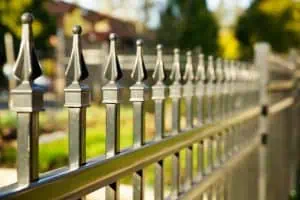Choosing What Kind of Nails to Use on Cedar Fence?
If you’re installing a cedar fence, it’s important to choose the right nails. Not only can they ensure the longevity of your fencing, but they also reduce the cost of your installation. However, choosing the wrong type of fastener could be hazardous to your safety and the appearance of your fence. Fortunately, there are a number of tips that will help you select the best nails.
(Looking for Missoula fence companies? Contact us today!)

Generally, you’ll want to choose a nail that is thick enough to withstand the weight of the fence material. Thin nails are prone to bending or breaking under heavy weight. If your fencing is made of hardwood, you’ll want to use long, thick nails to minimize the chances of your pickets splitting.
If you’re installing a fence made of non-pressure-treated pine, you should consider using screws instead. These are more durable and resistant to corrosion. You’ll have to be careful not to place the screws in a high-humidity area or near saltwater.
If you’re installing a cedar picket fence, you’ll want to use hot-dipped galvanized nails. These are the most popular choice, and they provide a better level of corrosion resistance. You may also want to opt for a polymer coated fastener. These are safe to use in outdoor applications, and they are suitable for all construction jobs.
You can also choose to use aluminum or stainless steel nails. Both are lightweight and corrosion-resistant, but they are expensive. If you’re building a cedar fence, though, it’s worth the extra expense.
If you’re not sure which kind of fastener is best for your fence, check with the manufacturer. They’ll recommend the correct type of fastener based on your fence’s wood species. It’s also important to choose a type that has the necessary gripping strength.
You’ll find a range of materials to choose from, including stainless steel, copper, and galvanized steel. In general, though, you’ll want to avoid copper if you plan to put the fence in an area with a lot of saltwater. You may also want to consider choosing a ring-shank nail, which offers added grip. These nails have raised rings on the shank that allow them to grip the wood like a screw. The extra grip is useful for holding the wood in place, especially when the wood expands or contracts.
You’ll also want to choose a screw that has an impact drive. These screws bite into the wood with ease, and they don’t need to be pre-drilled. They offer a more reliable hold than nails, but they can be difficult to install. The screws themselves are typically two to six inches in length. They should be at least one-half the thickness of the base material. You should also consider whether you’ll need to drill a hole for each nail. If you do, you’ll need to use a drill bit that’s about the same size as the screw. If you do, you’ll need a bit of practice to make sure you get the job done correctly.

